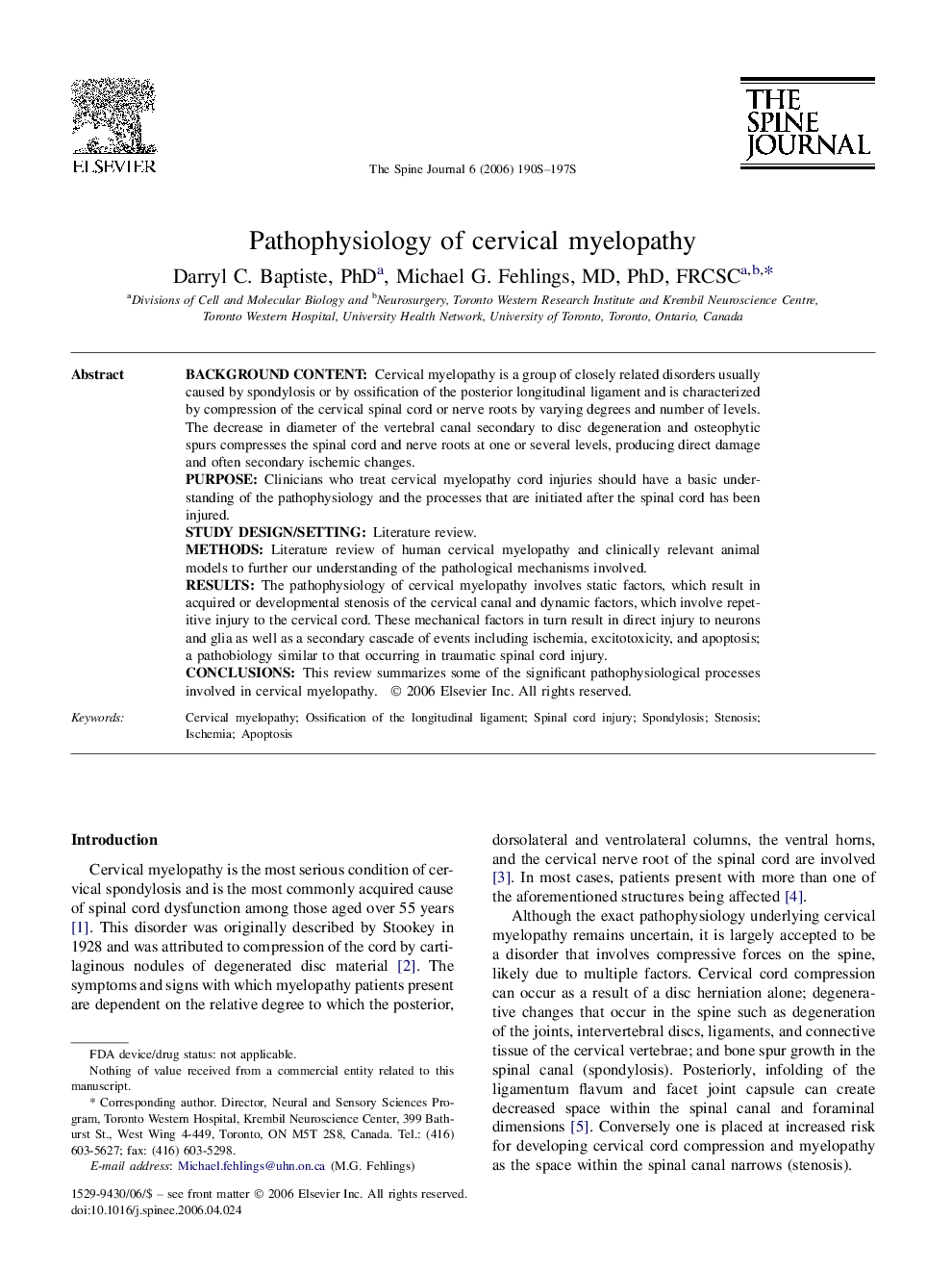| Article ID | Journal | Published Year | Pages | File Type |
|---|---|---|---|---|
| 4100247 | The Spine Journal | 2006 | 8 Pages |
Background contentCervical myelopathy is a group of closely related disorders usually caused by spondylosis or by ossification of the posterior longitudinal ligament and is characterized by compression of the cervical spinal cord or nerve roots by varying degrees and number of levels. The decrease in diameter of the vertebral canal secondary to disc degeneration and osteophytic spurs compresses the spinal cord and nerve roots at one or several levels, producing direct damage and often secondary ischemic changes.PurposeClinicians who treat cervical myelopathy cord injuries should have a basic understanding of the pathophysiology and the processes that are initiated after the spinal cord has been injured.Study design/settingLiterature review.MethodsLiterature review of human cervical myelopathy and clinically relevant animal models to further our understanding of the pathological mechanisms involved.ResultsThe pathophysiology of cervical myelopathy involves static factors, which result in acquired or developmental stenosis of the cervical canal and dynamic factors, which involve repetitive injury to the cervical cord. These mechanical factors in turn result in direct injury to neurons and glia as well as a secondary cascade of events including ischemia, excitotoxicity, and apoptosis; a pathobiology similar to that occurring in traumatic spinal cord injury.ConclusionsThis review summarizes some of the significant pathophysiological processes involved in cervical myelopathy.
